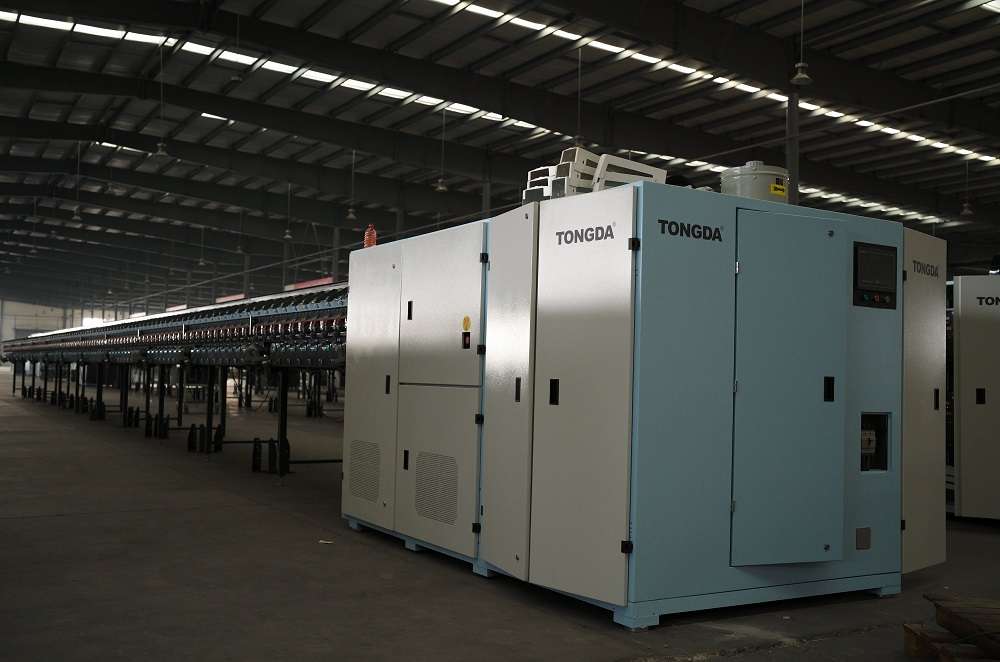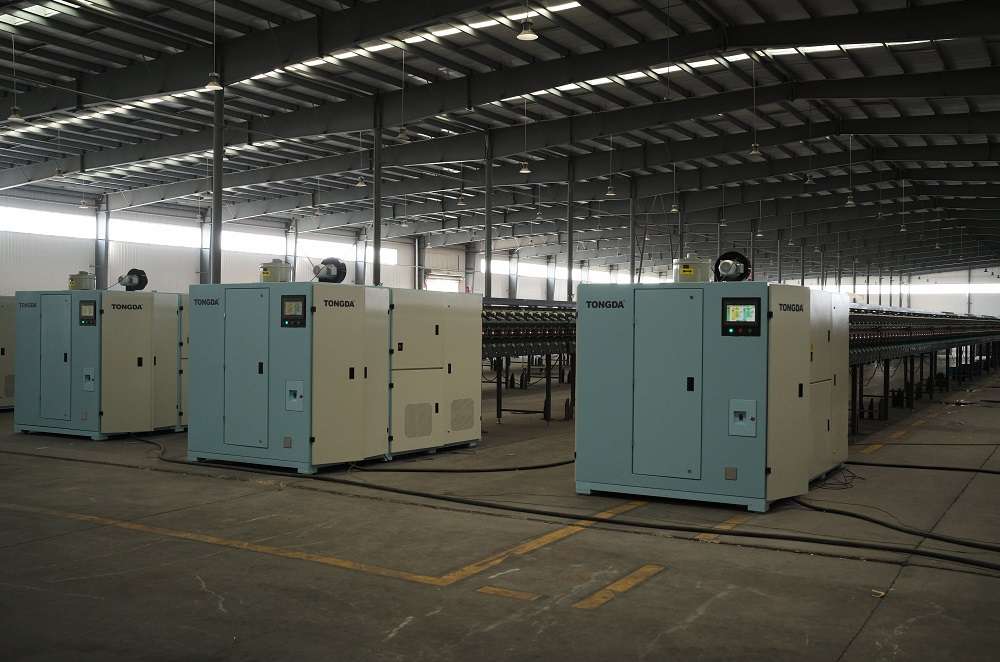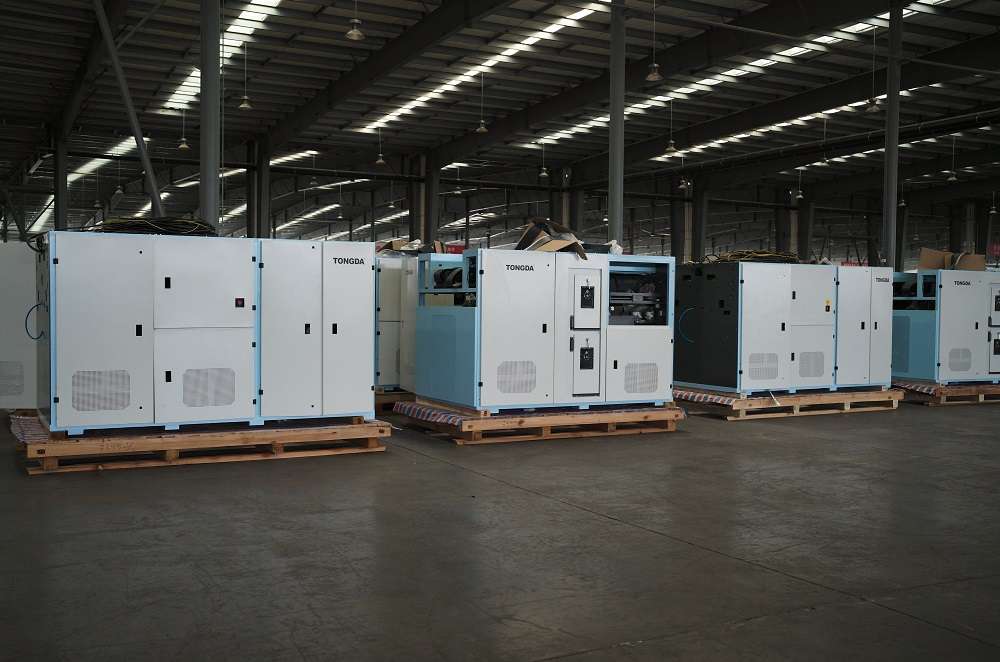Open-end spinning is a technology for creating yarn without using a spindle. It is also known as break spinning or rotor spinning. The principle behind open-end spinning is similar to that of a clothes dryer spinning full of sheets. If you could open the door and pull out a sheet, it would spin together as you pulled it out. Sliver from the card goes into the rotor, is spun into yarn and comes out, wrapped up on a bobbin, all ready to go to the next step. There is no roving stage or re-packaging on an auto-coner. This system is much less labour-intensive and faster than ring spinning with rotor speeds up to 140,000 rpm. The Rotor design is the key to the operation of the open-ended spinners. Each type of fibre may require a different rotor design for optimal product quality and processing speed.

Figure 1: RS30D Rotor spinning machine open end spinning machine
1.What Are Open-end Technologies?
Open-end spinning is a technology for creating yarn without using a spindle. It is also known as break spinning or rotor spinning. The principle behind open-end spinning is similar to that of a clothes dryer spinning full of sheets. If you could open the door and pull out a sheet, it would spin together as you pulled it out. Sliver from the card goes into the rotor, is spun into yarn and comes out, wrapped up on a bobbin, all ready to go to the next step. There is no roving stage or re-packaging on an auto-coner. This system is much less labour-intensive and faster than ring spinning with rotor speeds up to 140,000 rpm. The Rotor design is the key to the operation of the open-ended spinners. Each type of fibre may require a different rotor design for optimal product quality and processing speed.

Figure2: RS30D Rotor spinning machine open end spinning machine
2.Characteristics
Higher productivity
This is a major criterion, as productivity reduces the cost of manufacturing. The O.E. machines that are now in market boasts of many a basic needs like, longer length of machine, higher speeds, able to process coarser hank, fewer changes for count, easy access to parts (less downtime for cleaning), longer production time between cleaning schedules, computerized controls for less power consumption and lower downtime and complete report generation giving leads to problem area are some points to discuss.
High-content sliver cans (up to 18”)
In early days large machines were equipped with less distance between rotors (gauge of machine). This led to creeling of very small cans, which required frequent can changes. All major manufacturers currently allow cans up to 18” diameter leading to less breakage, less joining of yarn, hence better quality and higher productivity. Originally round cans were used. Rectangular cans are used because they double sliver capacity in the same sliver can footprint.
Larger packages of yarn (4 to 5 kg)
The final package size has continued to increase. The final package size is important because it reduces tube change frequency and thus reduces idle time for creeling. Current yarn packages typically weigh 4–5 kg.
Less power consumption
Using individual motors and electronic controls for each of the various drives of the machine maximizes energy efficiency and minimizes downtime.
Automation
All spinning machines, whether ring or open-end, need yarn joining to repair breaks or start new sliver cans. Joining the yarn has historically been a labor-intensive activity and a source of quality defects. Autopiecing units are robots that automate this process. Market leaders like TONGDA have machines that incorporate good quality autopiecers and autodoffing. This automation leads to less material handling costs and helps improve quality of the final product.
Flexibility of spinning components
Many vendors are offering machines that can be programmed to produce many different types of yarns. The ability to rapidly change production results in the flexibility to serve multiple markets. A contemporary spinning mill should be able to produce a range of products: denim, knitting, towels, structured fabrics, construction fabrics, and various other products like core spun, multi count, etc.
Handling count range.
Machines need to be easily programmed to spin yarns from 4sNe to 60sNe. This ability allows a single machine to produce yarns that cater to many different end-user requirements.
3.Advantages
Disappearance of simplex frame.
Under certain circumstances, elimination of the second passage draw frame.
In some cases, with the use of auto-leveller at the cards, elimination of even the draw frame passage.
Bigger supply of cans to open-end and bigger packages to weaving.
Elimination of winding.
Less labor and power cost per kilogram of yarn.
Higher productivity almost 7 times in the case of 10s and high efficiency.
Fully automated mill a reality.
4.What Is The Difference Between Open-end And Ring Spinning?
The production speed in open-end spinning is higher than in Ring spinning systems. This determines a lower production cost.
Process steps in open-end spinning are shorter than in Ring spinning. Slivers are directly transforming into yarn. This is one of the factors reducing the cost.
The yarn produced in the open-end system is bulkier, more elastic, more absorbent and has less hairiness than Ring yarn (20-40%).
The properties of the yarn produced in the open-end system are less variable than the ring yarn. Thinness, unevenness and durability change less along the thread.
Open-end yarns cannot be produced in fine counts as ring yarns. In practice, with the open-end technology, it is difficult to produce a yarn with a yarn count higher than Ne30 (Nm50). According to the process, there must be an average of 70-100 fibers in the cross section of open-end yarns and 50-70 fibers in cross section of ring yarns).
One technological disadvantage of open-end spinning is the spiral fibers formed on the yarn surface. Fiber packing is not uniform, more towards the yarn axis and less towards the surface.
Rotor spun yarn has less variation in strength.
5.Open end spinning from TONGDA

Figure3: RS30D Rotor spinning machine open end spinning machine


 LANGUAGE
LANGUAGE







